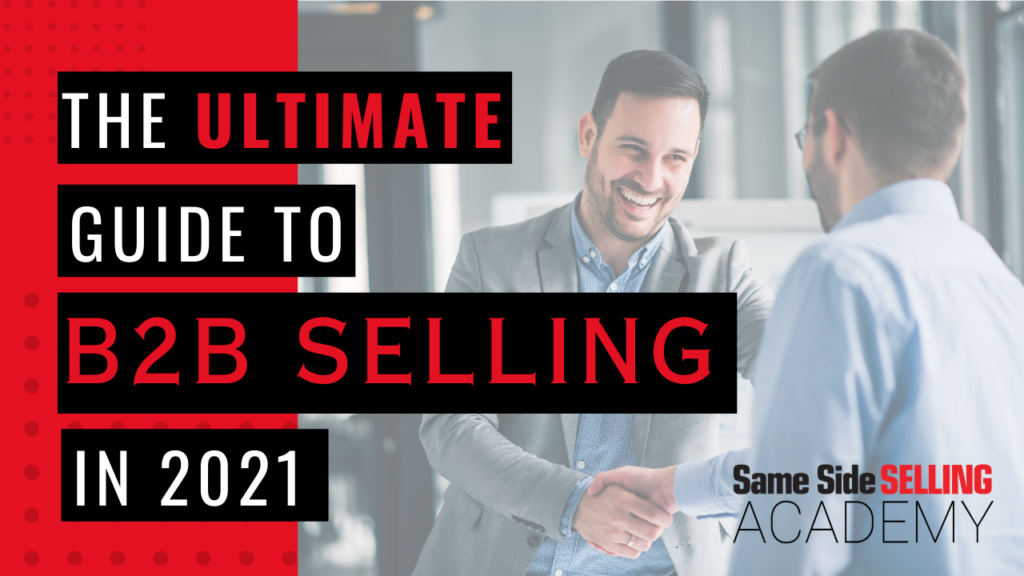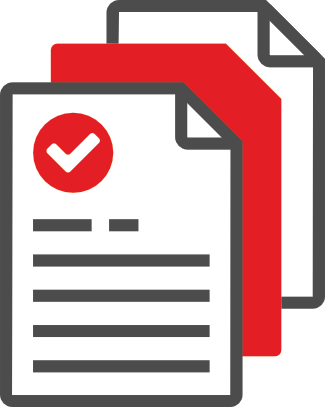Over the last year, our lives have changed in ways we couldn’t have imagined. The Coronavirus Pandemic has affected us in nearly every aspect of our lives -including our businesses and the way we sell products and services.
Networking events, conferences, in-person meetings, and other ways of attracting customers aren’t available anymore. This means that some of the knowledge, methods, and even some of the characteristics we used to associate with top-performing salespeople have also changed.
The bottom line is: the way we used to do things probably isn’t working anymore.
So, how do we change with the times, stand out, and train our team for this new environment?

One of the most important things we can understand in sales is how we earn attention, especially in a crowded virtual world.
Attention has become an even more priceless commodity as people have begun working from home and maybe distracted by new concerns and routines.
In my decades of B2B selling experience, I have found that the best way to stand out in the market is to use the Same Side Selling Quadrants.
If you’re finding your sales stalling these days, it’s time to use these quadrants to modernize for success, whether in-person or virtually.
The best way to attract the attention of clients is to focus on the problems you solve, not what you do!
This means that your sales team needs to have a clear understanding of what problems your product or service solves, and what type of client is likely to have those problems.
When our team has this understanding, we will spend our time effectively seeking out clients who have the type of problems we are good at solving, rather than wasting time on people who aren’t going to benefit.
In this quadrant, your sales team and your potential client need to be able to answer the question: What problem(s) does this solve and why do we need it?
Next, we need to be able to articulate the impact our product or service will have on our clients.
During this step we want to remember, our job is not to persuade or coerce the client into buying from us. Our job is to get to the truth as quickly as possible.
We do this by asking the right questions to help the buyer can convince you, and in turn, themselves, that their problem is worth solving I like to use a medical example to illustrate this point. If a doctor walked up to you and said, “I’ve got an opening for tennis elbow surgery next Tuesday at 10,” you wouldn’t just schedule yourself for the appointment immediately.
An effective doctor would describe the symptoms of tennis elbow, ask you if you were experiencing any of them, and then explain the consequences of not treating it.
If it turned out that you were experiencing those same symptoms, you’d probably be very interested in scheduling that appointment.
The same holds true in B2B selling. If your client isn’t convinced that the problem you are good at solving is one that their business has, or that is important to fix the problem, they probably won’t be very interested in engaging with you.
The question now becomes, how do we do this?
A successful salesperson will always ask more questions than give answers. They are seeking to discover more about the client’s situation and see if they can help.
Questions like these will help make clear to your client the impact of buying what you are selling.
Next, we want to find out what results or outcome the client is hoping for. This is where we distinguish ourselves from the competition.
If the client doesn’t understand the difference between what you do, and what the other guys do, it’s not your client’s fault, it’s yours! Helping your client to differentiate between you and the other potential sellers can be achieved using the Client Vision Pyramid.

You know that you offer a premium solution, but your potential customer probably doesn’t know the difference yet. You can help your client by establishing your relative position right from the beginning.
Once you’ve established the three different levels, you can ask your client, “Which level are you looking for?’
Start by telling your client the attributes you have that clients truly value. Then, describe the entry and effective level players. Make sure each level sounds attractive in its own right.
When you can clearly show your client the three levels, they will be able to see the unique value you provide and be able to more easily put the competitors in the other categories on their own.
Once our client is interested in participating with us at the “effective level”, we need to discuss how they measure success.
For a seller, the finish line is often the sale, but for the client, the finish line is the results or outcome of the good or service they bought.
By establishing the expected results from the beginning, we set up our partnership for success, and build trust with our client that we will deliver what we have promised.
The last step in standing out in the crowded marketplace is making sure we have all the right stakeholders involved from the beginning.
We must ask about this tactfully, so we don’t damage our relationship with our client.
This can sound like:
The people who are in the answers to these questions are the people that need to be involved. Once we have determined who these people are, we can ask our client something like, “What would be the best way to get these people involved in this decision that would be most comfortable for you?”
Using the Same Side Selling Quadrants allows us to have an open and honest conversation with our potential clients. We will get to the truth quickly and capture their attention.
Most of all, we will differentiate ourselves from others by focusing on the problems we solve, rather than coercion or persuasion. We will be different because we are here to solve, not to sell.
If you want more information about the Same Side Selling Quadrants, check out Same Side Selling Academy.
When you join, you’ll receive access to the Same Side Selling CORE Lessons to help you understand and master the principles of Same Side Selling. You’ll also have access to PDF worksheets for each CORE lesson to reinforce and apply the concepts you learn, along with many other valuable video and written resources to help you dive even deeper into these tools. Visit the website now to learn more!
Mentoring and coaching your sales team - whether remote or in-person - is similar to the approach you’d want to take with any adult.
Nobody wants to feel micromanaged, so the best way to set yourself up for success is to create a process that allows you to check in and provide mentoring or correction as needed.
The first thing we want to develop is a framework for our team so that they know what to do, how to do it, and when to ask for help.
There are three important pieces to this framework:
When you have this framework in place, there won’t be much value in asking about individual activities, but you’ll be able to measure accomplishments.
One mistake I see, when it comes to managing salespeople, is that we only begin to intervene when someone is underperforming. By then it’s often too late to do much about it.
Instead of waiting for this to happen, we want to co-build a plan together before they even start selling.
If their goal is to sell two million dollars a year, we should ask them how they plan to achieve that goal and set up a plan for success together. We might discuss how they plan to break up their goal, what industries they should be focused on, or what additional training or resources they need to achieve success.
The best way to reach people - whether in person or remotely - is to ask questions!
After we have the framework and a plan in place, our management just becomes a matter of checking in with our sales team. We can find out how the plan we built together is going, what in their path has changed that could affect their success, and how we can help support them.
By following this management method we don’t spend our time telling people what not to do, or trying to course-correct someone when it’s too late.
Instead, we take the time to set them up for positive results by creating a plan with them to deliver the outcome we want. When we manage and mentor our sales team in this way we all get to experience the feeling of success.
Many salespeople are used to qualifying clients using the acronym, B.A.N.T. They were taught to ask people what their budget was, who had the authority to make a buying decision, what the need was, and how time-sensitive it was.
This is an old-school way of qualifying that isn’t relevant anymore. Instead, we want to focus on qualification using the Same Side Selling Quadrants:
For example, if you live somewhere cold, and in the middle of the winter a client’s furnace goes out it doesn’t make sense to ask them if they’ve budgeted for a new furnace. They are going to need to purchase that furnace whether it was part of their budget.
If you chose not to engage with a client who can benefit from your product or service just because they said they haven’t budgeted for it, you’d be missing many opportunities.
When we instead use the Same Side Quadrants, we help build mutual understanding about what the client is trying to solve… if it is worth solving, and what results they would need to see for success.
We take notes by splitting a blank page into four quadrants. In the upper left, we take notes about the ISSUE (What are they trying to resolve). In the upper right, we take notes about the IMPACT and IMPORTANCE (What happens if they don’t solve the issue. And, how important is a solution compared to what’s on their plate). In the lower-left take notes about RESULTS (what can we measure for success). In the lower right, we take notes about OTHERS INVOLVED (who else should we include).
This structure gives you a quick read about which opportunities are real, and which ones are not.
If you want to get to the truth quickly, B.A.N.T. is out. Modernize your approach with the Same Side Quadrants.
When sales were done mostly in-person, a salesperson who had a lot of charisma or personality could still get pretty far, even without some of the foundational skills.
Most of us feel compelled to be polite when someone is standing in front of us, whether we are interested in their offer or not. But now, with virtual selling, people aren’t as concerned about appearing rude and we are dealing with the anonymity that hiding behind a computer screen creates.
Charisma and personality are still helpful, but what matters most in a virtual environment is trust.
Top sellers build trust, not by being coercive, but by getting the truth as quickly as possible. They are masters at asking the right questions to help their clients determine if they have a problem worth solving. If so, then we’re just working together to see if the seller is a good fit to deliver the solution. Top performers are more focused on been seen as a subject matter expert, than as an order taker or a salesperson.
They stand out because they don’t sell, they solve.
Virtual learning has become commonplace in the last year. From children to adults, we’ve all had to adjust to learning in front of a computer instead of from an in-person teacher. While this can be difficult, there are some advantages too.
In 2019, I would have told you that in-person, live training is the only way to learn. As an added service, in early 2020 (before the global pandemic), we launched the Same Side Selling Academy. Throughout 2020 (the Academy became pretty popular when folks were all remote), we started noticing that some members of a team would view a lesson once at 1.2 times the recorded speed.
Other team members would view the lesson 4 times in order to pass the quiz. This was a wake-up call. Our assumption in the past was that everyone was nodding their heads when the topic made sense. More likely, they were nodding their heads to make it appear that they understood the material - even if they didn’t.
From that experience, we adapted the Same Side Selling Academy to allow learners to work at their own pace while keeping track of their progress and achievements.
We also discovered that top-performing teams need three elements for success:
Top performing athletes, musicians, and surgeons all practice regularly. Top-performing salespeople also benefit from regular practice. However, sales professionals often shared excuses about why they didn’t practice with each other. Practice didn’t seem real. It was the same routine repeatedly. It was boring.
So, we built a playful tool called Same Side Improv where they can have fun while getting real experience. Once again, it isn’t the only solution for practice. It just happens to be fun and effective. The platform allows for variability so that each time you use it your sales team will get to experience a new condition and learn how to best handle common situations that come up over and over in B2B sales.
Just because your team is remote, doesn’t mean that you couldn’t and shouldn’t develop their skills. In fact, with changing conditions, improving their approach is especially critical. Same Side Selling Academy is just one tool you can use to develop a team, even when in-person training is limited. You’ll discover an approach that everyone can embrace - especially your customers. Ultimately, find and embrace a system - even if it’s not this one.
We're proud of the fact that the Same Side Selling Academy is ranked as one of the top 5 Sale Development Platforms globally. The key, however, is having a tool. And, since our platform isn't the right fit for everyone, we've highlighted some of the essential ingredients for success, regardless of which methodology you select.
The essential elements are 1) A common framework or language that everyone can follow complete with worksheets to put concepts into practice, related videos and podcasts, and outside experts in complementary topics; 2) A playbook of scenarios and what to do when those situations arise. For example, what do you do when your client seems interested and then mentions that another company has a cheaper solution? 3) An environment for regular role-play and mentoring live with expertise. This is possibly my favorite activity each month where I get to work through real-life scenarios with our members. With help from the core material, playbook, monthly live coaches call, and guidance from outside experts you’ll soon have all the skills you need to sell on the same side as your clients. Any program that offers these components is worth a look.
When done properly, you’ll learn to reject the games and battles and instead replace them with a problem-solving mindset that will build trust with your clients. You’ll see an increase in your returns with these integrity-based methods.
If you want to master an approach to growing a business that everyone can embrace, especially you’re clients, you’re in the right place.
If you have questions, please contact us at [email protected] or visit our website here to learn more.



You must be logged in if you want to submit a suggestion.